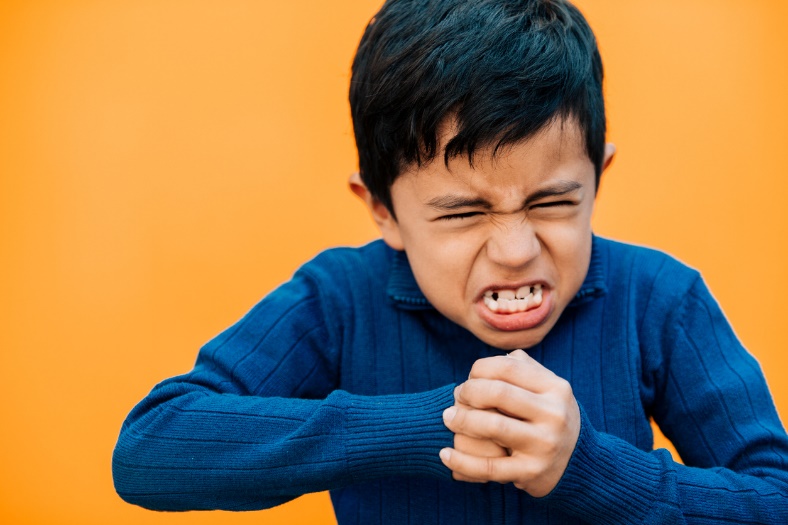Irritability in Children Can be More than Just a Bad Mood
Irritability, defined as a low threshold to experience anger in response to frustration, is one of the main reasons children are referred to a mental health evaluation. Irritability can appear as age-inappropriate temper outbursts and a sullen, grouchy mood. It includes both mood and behavior components. (1, 2, 3)

All children (and adults) are irritable at some time, such as when they’re tired or not feeling well. The things that health care providers look for when considering irritability are how it impacts the child’s ability to function and whether it continues over time and in different settings, such as at school, at home and at play.
Irritability is associated with several child and adolescent mental health conditions. It is among the specific symptoms of anxiety, depression and oppositional defiant disorder. In 2013, the childhood disorder—disruptive mood dysregulation disorder—was added to the Diagnostic and Statistical Manual of Mental Disorders (DSM). The key symptoms of the disorder are chronic and severe irritability and temper tantrums.
Irritability is also common in children and adolescents with several other mental health conditions, including ADHD, bipolar disorder and autism. Irritability in children has been associated with an increased likelihood of depression and anxiety later in life.
 While there is little research specifically on treatment for irritability, cognitive behavior therapy and parent management training have shown the most effective for addressing irritability in children. Most information about treatment is based on treatment of related conditions.
While there is little research specifically on treatment for irritability, cognitive behavior therapy and parent management training have shown the most effective for addressing irritability in children. Most information about treatment is based on treatment of related conditions.
A new study looks at the possibility of distinct types of irritability. Lucy Riglin, Ph.D., of Cardiff University, and colleagues, identified a neurodevelopmental/ADHD type that begins in childhood and a depression/mood type that begins in adolescence. The study involved information on nearly 8,000 children and adolescents in the United Kingdom followed over a period of eight years. Looking over time is important to help researchers identify similar symptoms that may mean different things at different developmental stages. Increased irritability beginning in children was more common among boys and was associated with ADHD. Irritability beginning in adolescence was more common among girls and was associated with depression.
The authors of another recent study on childhood irritability, led by Argyris Stringaris, M.D., Ph.D, with the National Institute of Mental Health, conclude that “irritability, recognized as a mood problem rather than a purely behavioral manifestation, is a common condition for young people.” They suggest that clinicians should not ignore irritability as it is linked with increased risk for later mental health problems.
References
(1) Stringaris, A, et al. Practitioner Review: Definition, recognition, and treatment challenges of irritability in young people. J Child Psychol Psychiatry. 2018 Jul;59(7):721-739.
(2) Krieger, FV, et al. Irritability in children and adolescents: past concepts, current debates, and future opportunities. Rev Bras Psiquiatr. 2013, 35(0 1):S32-S39.
(3) Leibenluft, E. Irritability in children: what we know and what we need to learn. World Psychiatry. 2017, 16(1)100-110.
(4) Vidal-Ribas, P.,et al. The status of irritability in psychiatry: A conceptual and quantitative review. Journal of the American Academy of Child & Adolescent Psychiatry, 2016, 55(7), 556-570.
